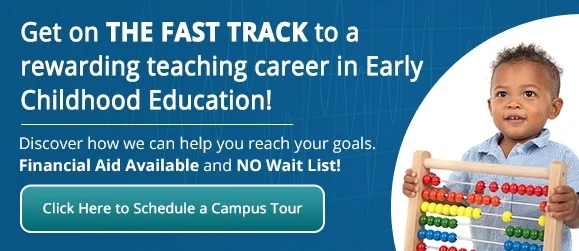Classroom Management Tips for Early Childhood Education
Posted On March 23,2023
Visualize a bustling preschool classroom scene with energetic children carrying on. The teacher, ready to regroup and move to the next activity, calls out a special phrase and the children hear the command, understand the cue, quiet down and wait for the teacher to talk.
You can probably remember your own preschool or elementary school teacher doing something similar to calm and quiet down the classroom and get everyone’s attention. At the time, you likely didn’t realize it was a purposeful and strategic classroom management technique. Instead, it probably felt like a fun game you played with your classmates and teacher.
It isn’t easy to keep everyone on track when working with young kids who are learning the basics of how to socialize and adjust to a school setting. So, what can early childhood educators do to help their classroom run smoothly?

Organize Your Classroom
An early childhood education classroom can be noisy, so the way you organize your room is essential in ensuring that effective learning is occurring wherever children are stationed. There are certain tips and tricks you learn from experience, like knowing how to separate noisy areas of the classroom from quiet ones. For example, blocks should be on the opposite side of the classroom from the reading nook.
There should be designated areas for reading, playing, timeout, eating, etc. Each area should have its own set of rules. If the boundaries of each space are clear, difficult situations occur less and are resolved quicker.
Provide Tools to Express Their Feelings
Young children don’t always understand how to manage their emotions or communicate their feelings. When a child gets upset, answering the question, “What’s wrong?” can be challenging. Children don’t always need to communicate why they are upset if they can express their feelings creatively.
ECE teachers can encourage their students to express their emotions through song, art, or movement in a quiet space set apart from the rest of the group. They should be allowed to manage their feelings by waiting in their safe, quiet space until they are able to participate. Teachers can offer gentle assistance if the students don’t know how to manage their emotions, all with the goal of continuing the flow and routines of the day.
Learn More about Our ECE ProgramHave a Plan for Transitions
There will be many times throughout the day when children are transitioning from one activity to another. It’s essential to plan for these transitions. Consider using a countdown as part of your approach so children are ready to move on when the time comes. Announcing that you’re going to countdown from ten to one before moving on to the next activity helps children feel prepared to make their move to another activity or area of the classroom.
Use Kid Friendly Labels
Keeping your classroom organized shouldn’t fall entirely on your shoulders. Enlist the help of your students to pick up after themselves and take responsibility for their own messes. Use labeled plastic bins to organize classroom toys and supplies. Label the bins with pictures of each object and label the shelves where the bins are stored with the same pictures. This helps students clean up but also helps teach matching skills.
Want to Learn More?
If you’re interested in becoming a teacher and working in an ECE classroom, Athena Career Academy can help! We will help you discover your own classroom management techniques as you learn everything you need to know to succeed in a rewarding career as an early childhood educator. We offer flexible class schedules and no wait list! If you’re interested in learning more about how to enroll, or have questions about our ECE degree program, contact us today.
